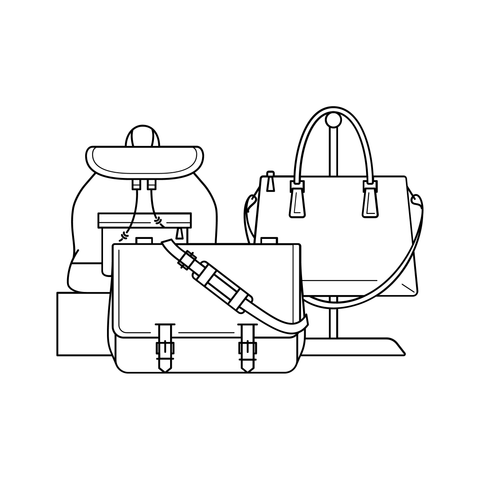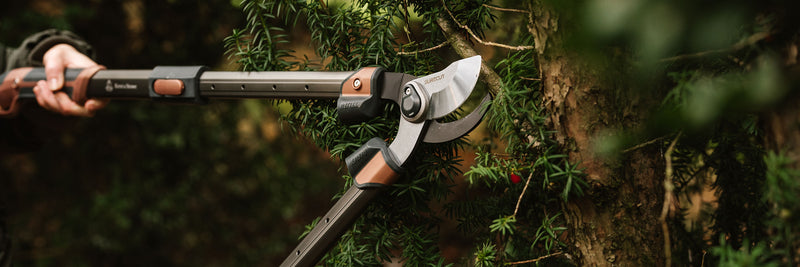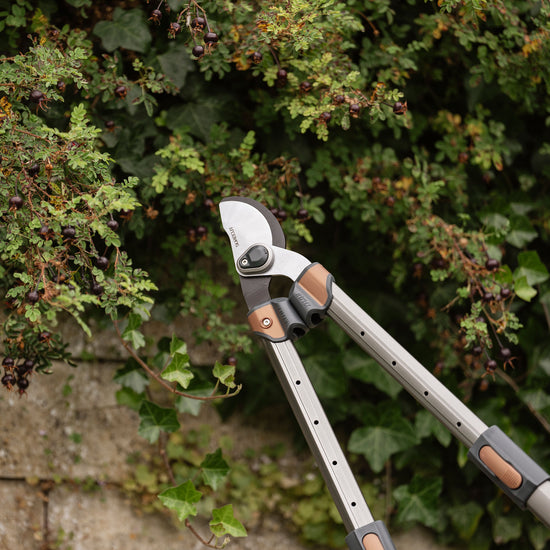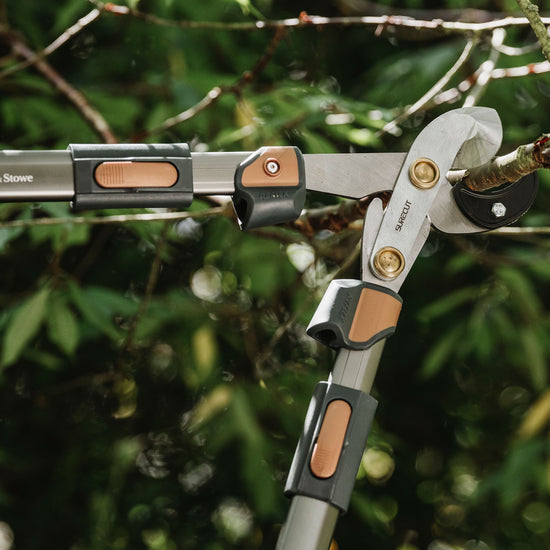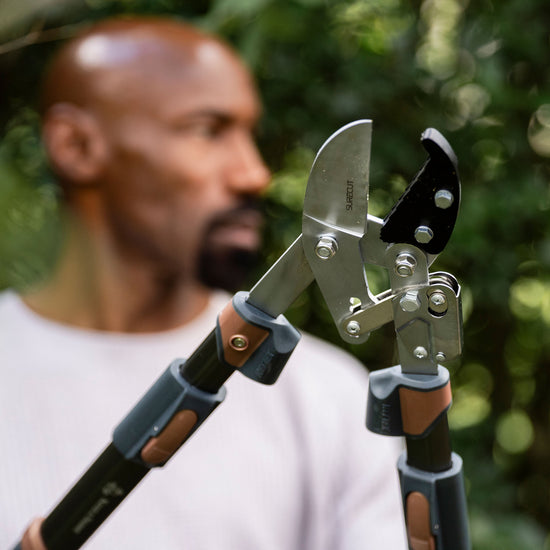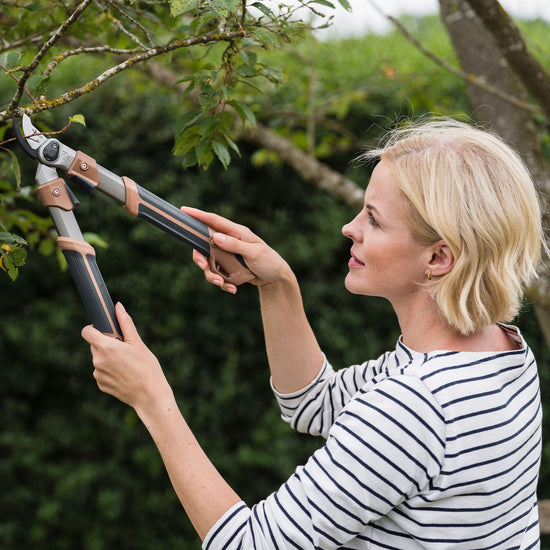Tree pruning is an essential gardening task that promotes healthy growth, improves the structure of trees, and ensures your garden looks its best. With the right tools, cutting back trees becomes more efficient and precise.
Why and When to Prune Trees
Tree pruning is vital for maintaining tree health, removing dead or diseased branches, and shaping the tree to suit your garden’s aesthetic. The best time for cutting back trees is typically during late winter or early spring when the tree is dormant, making it easier to see its structure. However, for flowering trees, pruning after blooming may be more appropriate. Always check the requirements of the specific tree species before you begin.
Choose the Right Tools for Tree Pruning
Having the proper tools is crucial for achieving clean, healthy cuts. Kent & Stowe offers a range of expertly designed tools that make tree pruning and cutting back trees straightforward:
- Bypass Loppers: For live branches up to 35mm in diameter, providing smooth, precise cuts.
- Hard Wood Loppers: For dead or hard wood branches up to 45mm in diameter.

- Pruning Saw: Ideal for removing larger, thicker branches cleanly and efficiently.

- Secateurs: Perfect for smaller branches and precision trimming.

- Telescopic Pruners: Designed for cutting back trees with high branches, eliminating the need for ladders.
How to Prune Trees
Before starting, take time to inspect the tree. Look for dead, diseased, or crossing branches that could affect its growth or appearance. Identify areas where branches are overcrowded or where pruning can improve air circulation and sunlight penetration.
Start with Deadwood: Remove dead or damaged branches first, cutting just outside the branch collar to encourage healing. Use all purpose loppers or a pruning saw for thicker sections.
Thin Out Overcrowded Areas: Prune crossing or tightly packed branches to create space and balance. This improves the tree’s health and shape.
Shape the Tree: When cutting back trees for aesthetic purposes, trim branches strategically to maintain a natural, balanced look. Telescopic pruners are particularly useful for reaching high branches.

Make Clean Cuts: Ensure your cuts are clean and precise to prevent damage or disease. Kent & Stowe’s sharp blades are designed to make this process easier and more efficient.
After pruning, clean and maintain your tools. Wipe down blades with a disinfectant to prevent disease transfer and apply oil to moving parts to keep them in excellent working condition. Read our guide to find out more on how to care for your garden tools.
Gather the removed branches and debris. Healthy clippings can be composted, while diseased material should be disposed of responsibly to avoid spreading issues to other plants.
